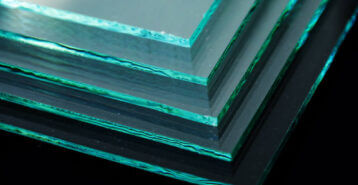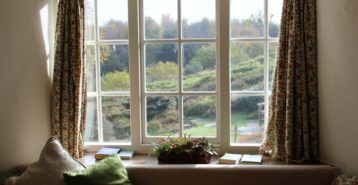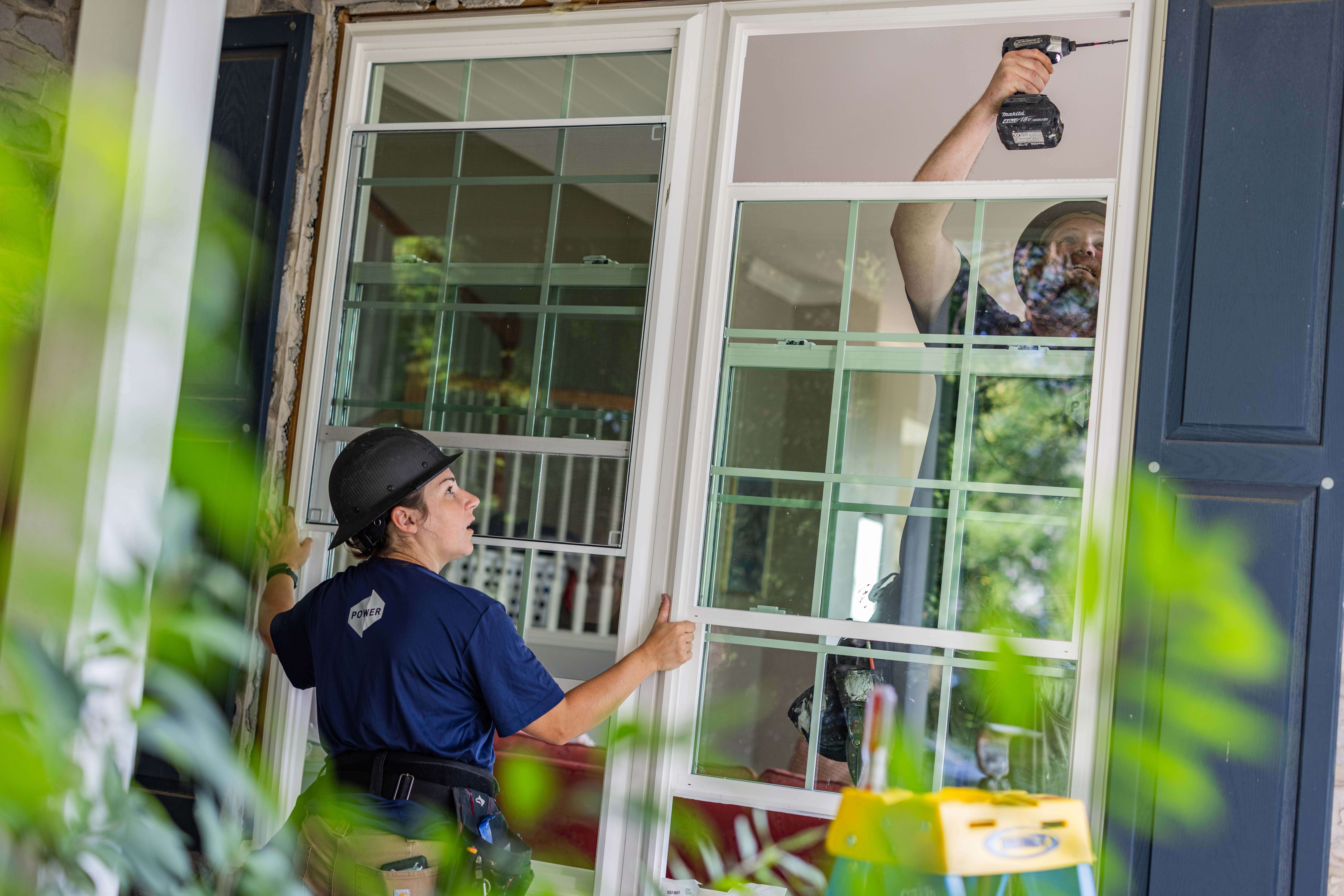What are Window Panes?
Window panes are sheets of glass that are housed inside of window frames. Older homes tend to have single-pane windows, but energy-efficient double- and even triple-pane windows are more commonplace in newer residential tract and custom homes.
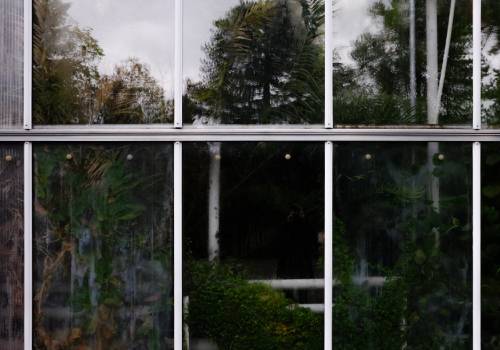
Panes come in various sizes and primarily provide natural lighting inside the home while enhancing outdoor views. Imagine a beachfront home in Malibu with expansive windows to enjoy the setting sun, or a house in Colorado with picture windows that frame the stunning Rocky Mountains.
Modernize created this comprehensive guide to window panes to help homeowners better understand why glass is the most common material, the range of window sizes, and alternative materials. Keep reading to learn more about window panes.
Pane vs Panel
Window panes and window panels are distinct but related. A window pane refers to the glass component of a window, while window panels are coverings, typically made of fabric, that are hung to cover the window pane.
Interior designers often use the term “window treatments” when discussing ways to cover windows. Think of window panels as part of a larger whole: when combined with accessories like a sash, blackout or insulated liner, or another panel, they form a window curtain. Window panels are usually hemmed at the bottom and attach to a curtain rod with grommets, ties, or tabs.
Window Panes: a History
Window panes are one of the most recognizable architectural features of a home — but that wasn’t always the case.
Widespread use of window panes in homes began in the 17th century. Early designs featured small rectangular or diamond-shaped panes set in wood or iron frames arranged in a grid pattern. By the late 1600s, window designs evolved to include double-hung sash windows, a style that remains common today. At the time, the 6-over-6 sash design was the standard.
In the 1800s, advancements in glass flattening techniques allowed for the production of larger window panes. These innovations made it possible to create the larger window sizes we see in homes across the U.S. today.
Why Are Window Panes Made of Glass?
Glass has been used for thousands of years, dating back to 5,000 BC when Phoenician merchants first created it. By the first century AD, molded glass was used to illuminate Imperial Roman bathhouses and prevent drafts.
Venice emerged as the global hub of glass manufacturing in the 8th century, refining techniques that set the standard for centuries. In the U.S., glassmaking began in 1608 with the construction of the first glass factory in Jamestown, Virginia.
By the 1800s, rising demand for window glass led to innovations like hand-operated glass-making machines. In 1902, inventor Irving W. Colburn revolutionized the industry by developing a sheet-glass drawing machine, which allowed for the mass production of window panes.
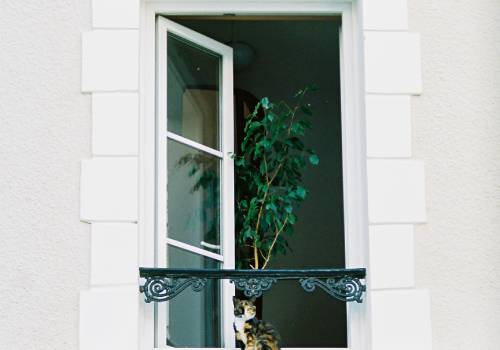
We have briefly covered the history of glass window panes, but that still doesn’t address the question of why window panes are made from glass instead of other materials. While glass like a soda bottle is fragile, glass window panes are actually quite hard and durable. Tempered glass is common for windows because it breaks into tiny granules rather than jagged shards when broken.
Glass is a solid material even when thin – most residential window panes are made from single-strength glass, which is just 3/32 of an inch thick. Larger window panes, however, such as sliding glass doors, are usually made from 1/8-inch thick glass. An alternative material, such as plastic, would have to be much thicker to span large spaces and withstand wind shear loads.
Glass is also an excellent insulator versus other materials, especially when two panes of window glass are sandwiched together with a layer of argon gas in the middle. And of course, glass provides unobstructed views to the outside world while letting pleasing natural light stream into the home. Lastly, glass is cost-effective, easy to clean, and does not wear or break down over time.
Single, Double and Triple Paned Windows
As noted earlier, window panes are the sheets of glass that are positioned inside the window frame. In this section we will discuss the difference between single, double and triple pane windows, as well as the benefits of the latter two types of windows.
Single Pane Windows
There’s a good reason why the majority of windows sold and installed in homes today have either double or triple window panes. Single pane windows might not cost as much as the other two, but homeowners likely will pay more over time in higher energy bills since single pane windows aren’t as energy efficient as double or triple pane windows. They are common in older homes, though they are still sold at many big box home improvement retailers and window specialty stores.
Single pane windows are more susceptible to transmitting outside heat and cold into the house through the process of conduction and through solar transmission since glass is transparent. Multipane windows, on the other hand, are typically filled with a layer of gas between the panes that drastically increases the window’s energy efficiency regardless of whether they directly face the sun or are located in shady areas.
According to Energy Star, the federal government-backed symbol that denotes energy efficient products, homeowners in colder northern U.S. climates can save $295 annually, on their utility bills after replacing single pane windows. Homeowners in hot southern regions, meanwhile, saved 31 percent.
Double Pane Windows
Double pane windows dominate the window industry because they are less costly than triple pane windows but offer the same energy saving benefits.
As the name suggests, double pane windows utilize two panes of glass. The space between the panes is usually filled with either argon or krypton gas, which greatly increases the window’s R-value (thermal resistance insulation value). The gas helps reduce heat transfer across the window – argon’s thermal conductivity is about 67% less than air. Argon is less expensive than krypton, which has even better conductivity properties, so it’s used more often. However, sometimes both noble gasses will be mixed as a compromise between cost and increased thermal conductivity.
Xenon and nitrogen are also used to fill the space between double pane windows.
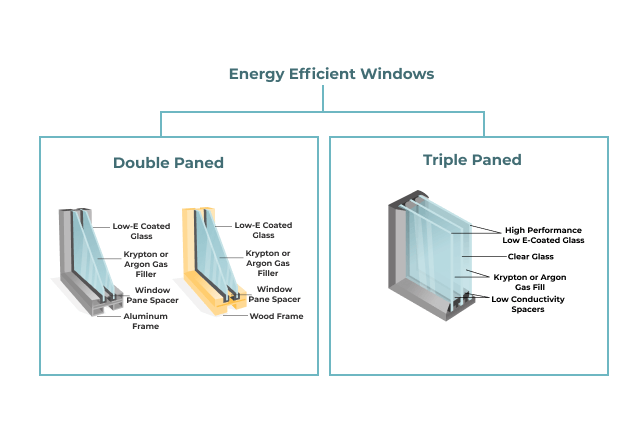
Triple Pane Windows
Triple pane windows are at the top of the market for energy efficiency and performance.
These windows feature three sheets of glass within the frame, with gaps typically filled with krypton or argon gas. This design not only provides superior thermal resistance but also significantly reduces outside noise, offering a quieter, more comfortable home environment.
While triple pane windows come with a higher price tag, they’re a worthwhile investment if you plan to stay in your home for 10 years or more. For homeowners with shorter timelines, dual pane windows may be a more cost-effective choice, as they tend to pay for themselves faster through reduced energy bills.
Alternatives to Window Glass Panes
While glass remains the most common material for window panes, there are several alternative materials for homeowners looking for a different option. Here are four popular alternatives:
- Acrylic Glass (Plexiglass): Acrylic glass, commonly known as plexiglass, is a popular alternative due to its affordability and durability. It offers approximately 17 times the impact resistance of traditional glass, making it a strong choice for areas requiring added protection. Plexiglass is also more transparent than glass and reduces glare and reflections.
- Plexiglass vs. Acrylic Glass: While similar, there are slight differences between acrylic glass and plexiglass. Acrylic glass is made from continuously extruded acrylic sheets, whereas plexiglass is manufactured using a cell-casting process. The latter results in a higher-quality, more durable plastic product.
- Polycarbonate: Polycarbonate is designed for applications where glass and plexiglass may fall short. It’s up to 250 times stronger than glass, making it a common choice for bulletproof windows. This material also requires less structural support, allowing for slimmer window frames without sacrificing strength.
- Plastic: Plastic window panes are often chosen for their affordability and versatility. They can be manufactured with double or triple panes, offering good thermal resistance and minimal maintenance. Available in a wide range of designs, colors, and styles, plastic windows can suit almost any aesthetic.
Putting It All Together
Choosing the perfect replacement windows can feel overwhelming, even with all the information about styles, benefits, and materials. That’s where Modernize comes in. We connect you with trusted window installation contractors in your area who bring the expertise and insight you need. These professionals will guide you every step of the way, ensuring you select the ideal windows and panes for your renovation or new home.
Compare top-rated windows pros in your area.
Read real homeowner reviews, explore qualifications, and view promotions. Modernize makes it easy to browse professionals and find one that will be perfect for your project.










